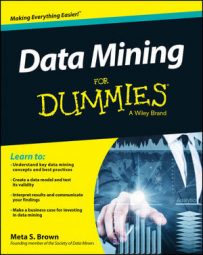Surveys may be the most common and familiar approach for obtaining your own unique data from people. Anybody can write a few questions, present them to some people, and there you have it . . . a survey. Good surveys, though, require thought and effort.
In survey research, people are asked to answer questions, usually about themselves. Typical survey questions are about
Demographics: Age, gender, occupation
Behavior: Purchasing or using specific products, spending patterns, participating in social or athletic activities
Intentions: Vote or not vote, candidate A or B, hire fewer or more new staff members next year
Attitudes: Often concerning current political or social issues
If the data that you want has to do with people’s feelings or actions that they may take in the future, a survey may be your only option for getting data. But surveys are also used for getting information that is simply easier to obtain by survey than other options.
For example, a lot of information exists about spending contained within credit card records, but getting access to those records through either the individual account holder or banks is all but impossible (and not without reason). But you can ask people how much they spent on your product (or a competitor’s or a specific class of products) last year, or how much they intend to spend next year, and many people will tell you.
Good survey research offers you the advantages of
Flexibility: You pose questions about any topic you choose. So you can always get information that is relevant, even for topics where no other data sources are available to you.
Speed: Surveys are quick to set up and conduct, so your data will be up to date.
Depth: Use surveys to fill in the information gaps that other data sources leave open.
Privacy: You’re not obliged to share the results with anyone. You’ll have an information edge over competitors.
But it’s not as simple as jotting down a few questions and asking a few people to answer. Questions must be written properly to be understood and obtain responses that are accurate and relevant for your needs. And you must get responses from people who are representative of those you aim to understand.

